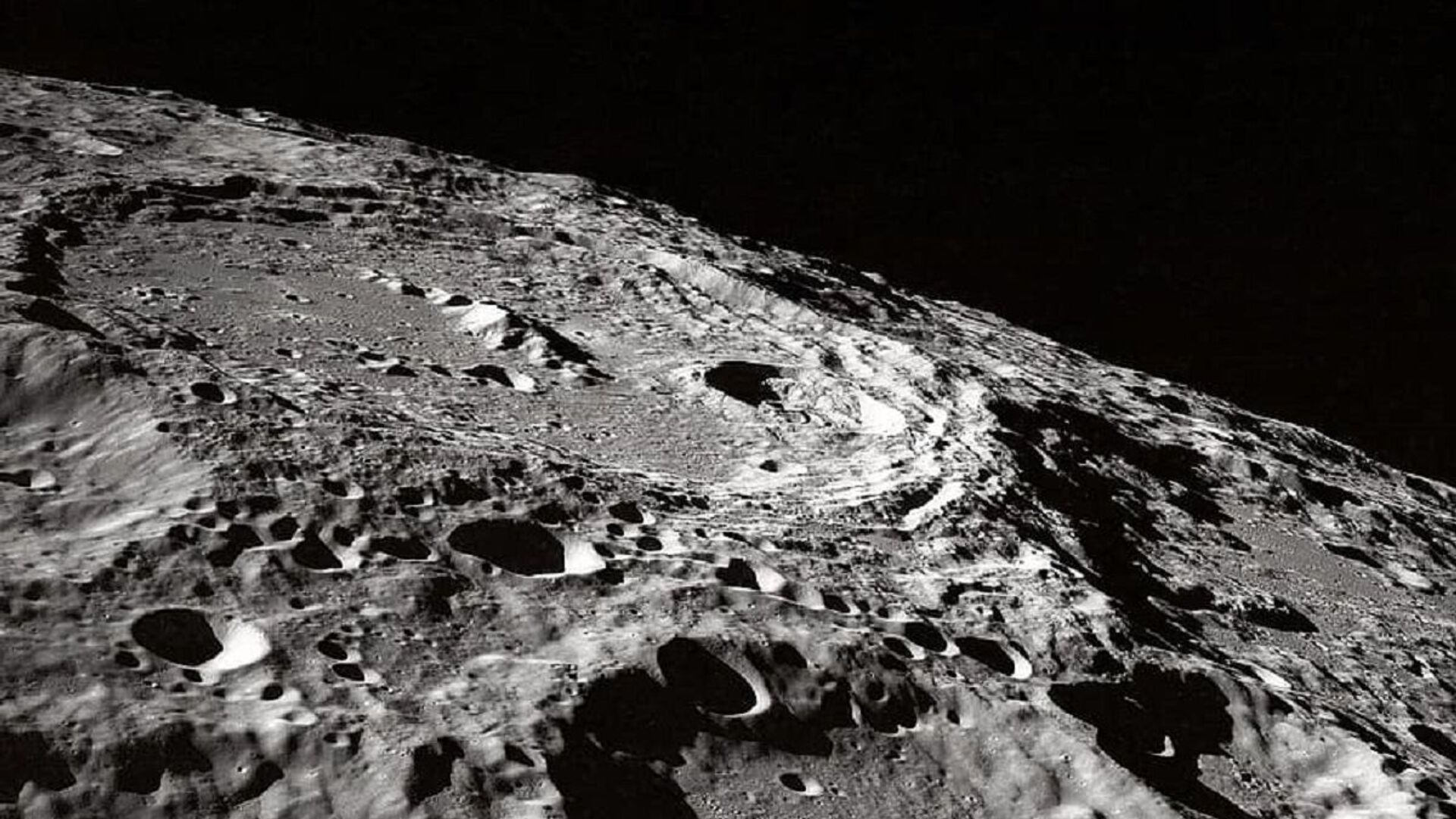https://sputnikglobe.com/20220529/china-plans-to-send-robotic-mission-to-moons-permanently-shadowed-south-pole-craters-1095861056.html
China Plans to Send Robotic Mission to Moon’s Permanently Shadowed South Pole Craters
China Plans to Send Robotic Mission to Moon’s Permanently Shadowed South Pole Craters
Sputnik International
China has launched five robotic missions since rolling out its lunar programme back in 2004. The most recent mission, Chang'e 5, landed on the moon in late... 29.05.2022, Sputnik International
2022-05-29T12:44+0000
2022-05-29T12:44+0000
2022-11-03T19:33+0000
china
moon
scientists
mission
craters
water
ice
earth
https://cdn1.img.sputnikglobe.com/img/07e4/09/0b/1080429721_0:263:1200:938_1920x0_80_0_0_448b87a15e6cc07c623a7ddefa8f9a54.jpg
Beijing is ready and willing to go ahead with the implementation of its lunar programme as Chinese scientists consider sending a robotic mission to the Moon’s craters, where it would land in the so-called permanently shadowed regions (PSRs) near the lunar south pole.Why are the regions are called permanently shadowed? Since the Moon is tidally locked facing Earth and there is no change of seasons, the Sun never rises to a significant height above the horizon there. Because of this factor, the Moon has both peaks of constant light, where eternal day reigns, and craters of eternal darkness, over which the Sun never rises.In a study published in the Journal of Deep Space Exploration, researchers from the Key Laboratory of Information Science of Electromagnetic Waves at Fudan University explained that shedding more light on PSRs will be the task of China’s Chang’e-7 mission, slated to be launched in 2024 or 2025.According to the study, the “Chang’E-7 mission plans a rover landing at the solar illuminated region near PSR. A mini-flyer carried by the lander will fly to the PSR to collect regolith samples for analysis. Selection of landing site and sampling site is critical for the mission.”The mission will consist of multiple spacecraft including an orbiter, relay satellite, lander, rover and “mini flying detector”, which is designed to help scientists track possible water-ice in the PSR.Many would probably wonder what this “flying detector” would look like. Researchers explained that they would most likely use a six-legged movable repetitive HexaMRL lander, developed by Shanghai Jiao Tong University. They added that the detector craft would be capable of numerous takeoffs and landings, and will use its six legs to sample the lunar regolith, a layer of heterogeneous material covering solid rock.China has successfully implemented a total of five Chang’E missions since unveiling its lunar programme in 2004.
https://sputnikglobe.com/20220129/china-lays-out-plan-for-moon-landings-asteroid-defense-system-in-new-space-program-white-paper-1092596641.html
china
earth
Sputnik International
feedback@sputniknews.com
+74956456601
MIA „Rossiya Segodnya“
2022
Oleg Burunov
https://cdn1.img.sputnikglobe.com/img/07e4/09/0b/1080424846_0:0:2048:2048_100x100_80_0_0_3d7b461f8a98586fa3fe739930816aea.jpg
Oleg Burunov
https://cdn1.img.sputnikglobe.com/img/07e4/09/0b/1080424846_0:0:2048:2048_100x100_80_0_0_3d7b461f8a98586fa3fe739930816aea.jpg
News
en_EN
Sputnik International
feedback@sputniknews.com
+74956456601
MIA „Rossiya Segodnya“
Sputnik International
feedback@sputniknews.com
+74956456601
MIA „Rossiya Segodnya“
Oleg Burunov
https://cdn1.img.sputnikglobe.com/img/07e4/09/0b/1080424846_0:0:2048:2048_100x100_80_0_0_3d7b461f8a98586fa3fe739930816aea.jpg
china, moon, scientists, mission, craters, water, ice, earth
china, moon, scientists, mission, craters, water, ice, earth
China Plans to Send Robotic Mission to Moon’s Permanently Shadowed South Pole Craters
12:44 GMT 29.05.2022 (Updated: 19:33 GMT 03.11.2022) China has launched five robotic missions since rolling out its lunar programme back in 2004. The most recent mission, Chang'e 5, landed on the moon in late 2020, before delivering 1.7 kg of lunar rocks and soil back to Earth, the first samples returned from Earth’s only natural satellite in about 44 years.
Beijing is ready and willing to go ahead with the implementation of its lunar programme as Chinese scientists consider sending
a robotic mission to the Moon’s craters, where it would land in the so-called permanently shadowed regions (PSRs) near the lunar south pole.
Why are the regions are called permanently shadowed? Since the Moon is tidally locked facing Earth and there is no change of seasons, the Sun never rises to a significant height above the horizon there. Because of this factor, the Moon has both peaks of constant light, where eternal day reigns, and craters of eternal darkness, over which the Sun never rises.

29 January 2022, 00:43 GMT
In a study published in the Journal of Deep Space Exploration, researchers from the Key Laboratory of Information Science of Electromagnetic Waves at Fudan University explained that shedding more light on PSRs will be the task of China’s Chang’e-7 mission, slated to be launched in 2024 or 2025.
“Detecting water-ice in PSR is a significant scientific question,” the survey notes, adding that “until now, no spacecraft has landed” in the region.
According to the study, the “Chang’E-7 mission plans a rover landing at the solar illuminated region near PSR. A mini-flyer carried by the lander will fly to the PSR to collect regolith samples for analysis. Selection of landing site and sampling site is critical for the mission.”
The mission will consist of multiple spacecraft including an orbiter, relay satellite, lander, rover and “mini flying detector”, which is designed to help scientists track possible water-ice in the PSR.
Many would probably wonder what this “flying detector” would look like. Researchers explained that they would most likely use a six-legged movable repetitive HexaMRL lander, developed by Shanghai Jiao Tong University. They added that the detector craft would be capable of numerous takeoffs and landings, and will use its six legs to sample the lunar regolith, a layer of heterogeneous material covering solid rock.
China has successfully implemented a total of five Chang’E missions since unveiling its lunar programme in 2004.



